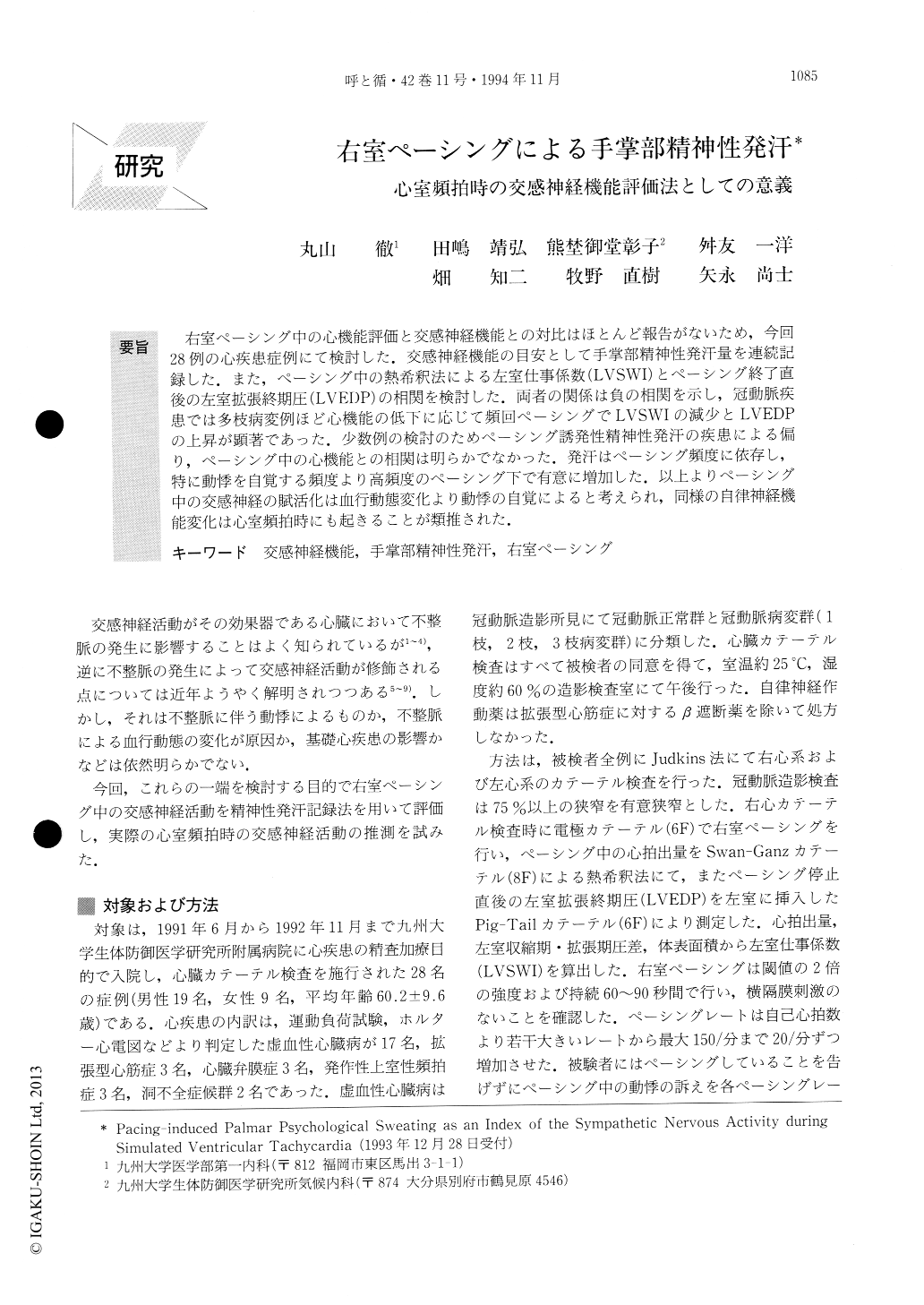Japanese
English
- 有料閲覧
- Abstract 文献概要
- 1ページ目 Look Inside
右室ペーシング中の心機能評価と交感神経機能との対比はほとんど報告がないため,今回28例の心疾患症例にて検討した・交感神経機能の目安として手掌部精神性発汗量を連続記録した.また,ペーシング中の熱希釈法による左室仕事係数(LVSWI)とペーシング終了直後の左室拡張終期圧(LVEDP)の相関を検討した.両者の関係は負の相関を示し,冠動脈疾患では多枝病変例ほど心機能の低下に応じて頻回ペーシングでLVSWIの減少とLVEDPの上昇が顕著であった.少数例の検討のためペーシング誘発性精神性発汗の疾患による偏り,ペーシング中の心機能との相関は明らかでなかった.発汗はペーシング頻度に依存し,特に動悸を自覚する頻度より高頻度のペーシング下で有意に増加した,以上よりペーシング中の交感神経の賦活化は血行動態変化より動悸の自覚によると考えられ,同様の自律神経機能変化は心室頻拍時にも起きることが類推された.
Since the relationship between sympathetic nervousactivity and left ventricular (LV) function altered bytemporary rapid pacing is unclear,we investigated thissimultaneous relationship using palmar psychologicalsweating monitored by newly developed hydrosensor(Kenz-Perspiro OSS-100,Suzuken,Japan) under thecatheterization in patients with various cardiac diseases(n=28).The severity of coronary artery disease couldbe predicted by the regression analyses among the LVend-diastolic pressure (LVEDP) and LV stroke workindex (LVSWI) during pacing.

Copyright © 1994, Igaku-Shoin Ltd. All rights reserved.


